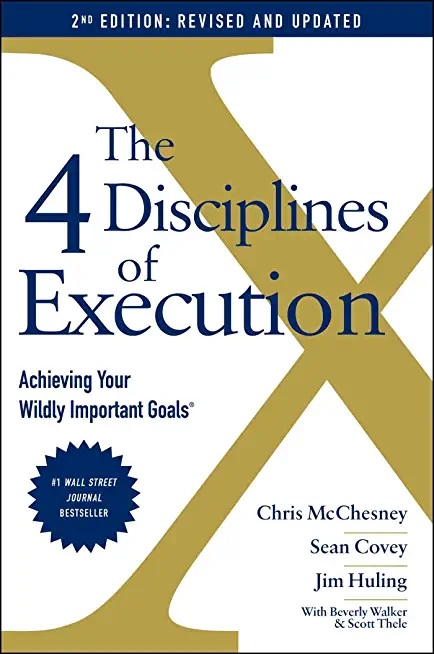So many great ideas, so little time… what do you do, as a leader, when there’s a multitude of inspiring ideas flying around but you simply don’t have the resources to make them all happen? When everything seems equally urgent in the whirlwind of everyday working life, where do you focus your energies? You need to be able to see the wood for the trees.
The concepts for Part 1 and Part 2 of these posts, comes from an excellent book. One that is well worth reading. The 4 Disciplines of Execution by C. McChesney, S. Covey and J. Huling.
The 4 Disciplines of Execution
As the authors say “A good idea without execution is worthless.”
It’s about WIGs and PIGs! If you’re constantly consumed by your everyday responsibilities, unable to focus on the most important goals because you’re drowning in brilliant ‘urgent’ ideas, this one is for you. Let’s explore how to withstand the power of the whirlwind.
What are Wigs and Pigs?
WIGS are Wildly Important Goals.
PIGS are Pretty Important Goals, an integral part of the whirlwind of everyday work. But why do they matter?
When you have too many potential goals and they all seem equally important, Wigs and Pigs come into their own. They give you a reliable way to figure out how to focus on fewer aims so you can achieve more of the best ones.
How do you do it? The idea is you choose just one Wildly Important Goal rather than running yourself ragged trying to achieve multiple aims all at once, some of which are actually not worth prioritising.
While this doesn’t mean ignoring the tasks and responsibilities needed to keep the company going on a daily basis, it does mean focusing hard on the things you most want to improve, those with the biggest positive impact.
This can be a challenge simply because ambitious, dedicated people aren’t inclined to do less, they’re usually focused on achieving more, especially when the ideas keep flowing one after another.
Choosing a WIG to concentrate on means pinning down the most important objectives, those that you won’t see coming to fruition unless you give them special attention. So how can you define a WIG? There’s a process.
How to identify Wigs
First, figure out exactly where you are now. Then decide where you want to be and set a deadline for getting there.
Pick three business-critical things that need to be done really well. It might be an operational matter, or administrative. It could involve marketing or management, sales or service levels.
Next define where the business needs to be to reach the goal and find a way to identify success. Then communicate the WIGS you’ve chosen well so everyone involved understands what the goals are, the part they’ll play in achieving them, how their role will impact the WIG, and how success will be measured.
Once you’re underway make communicating the WIG is an ongoing process, where you regularly update everyone so it remains high on their list.
What to do about your Pigs?
Pigs are actions that would help the business but don’t have a critical impact. They can be highly distracting thanks to being labelled ‘urgent’ when in fact they’re not crucial to the business’s ongoing success. The WIGS are the things that truly matter in the great scheme of things.
When you focus intensely on the goals that most drive business success you will be more effective. You will probably enjoy your role more, bring about positive change and deliver results. And that’s why Wigs and Pigs are so important.
We’ll help you separate the Wigs from the Pigs
If you’d like help separating your Pigs from your Wigs on the road to success, do call us. Plus, if you’ve found these ideas interesting, might like to read our related blog (Part 2) about the 4 Disciplines of Execution. Click here to read it.
About us:
We create the space for leaders to step back, think clearly, and navigate complexity with confidence. By sharpening the narrative that drives decisions, teams, and performance, we help leaders move forward with clarity and impact. Our approach blends deep listening, incisive challenge, and commercial focus—strengthening leadership at every level, from business transformation to boardroom decisions.
“We share resources that help coaches deepen their practice and expand their impact. The articles on this site are designed to spark fresh thinking, offer practical tools, and support the continuous growth of coaches at every stage. “
Jude Elliman
Founder
Our Core Approach:
We work with leaders to sharpen their thinking, strengthen their leadership, and navigate complexity with confidence. Our approach is built around three core areas:
Narrative Coaching – Working with the stories that shape leadership, teams, and organisations.
Commercial Focus – Cutting through complexity to drive clear, strategic decisions.
Challenge & Space – Asking the right questions while creating the space to reflect and grow.
Through this, we help leaders drive transformation, align teams, and make high-stakes decisions with clarity and impact.



